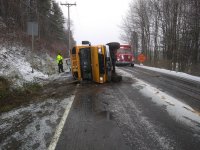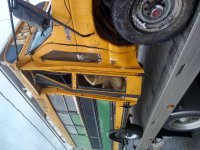PathNotTaken
Member
Your system of the centerline rear is interesting and definitely something I would consider... please go drive 200k miles and report back so I can have some more data on itIf you are referring to that massive "pivoting frames" thread, that made my head spin, too... People like to over complicate it seems.
You can probably use all the mounting points on your frame and still have a "pivoting system". My frame has 8 and I used them all. The rear ones just need to be on the centerline so they can tilt.
I think you will be able to make it lower with springs, but if you are planning to forego wheelweels, that will define your minimum height I think, and you wouldn't gain anything.
Jokes aside, my interior will place a large water tank on the back corner so I'm not sure how I feel about mounting them on centerline in the rear. Definitely worth considering though.
As for the wheel wells, you're absolutely right. I will have wheel wells to insure the minimum height possible. the main difficulty of minimum height in my build is the 3.2in frame hump over the axle. I plan to build the subframe around this hump and have the floor sit just above it, with a bit of clearance.






